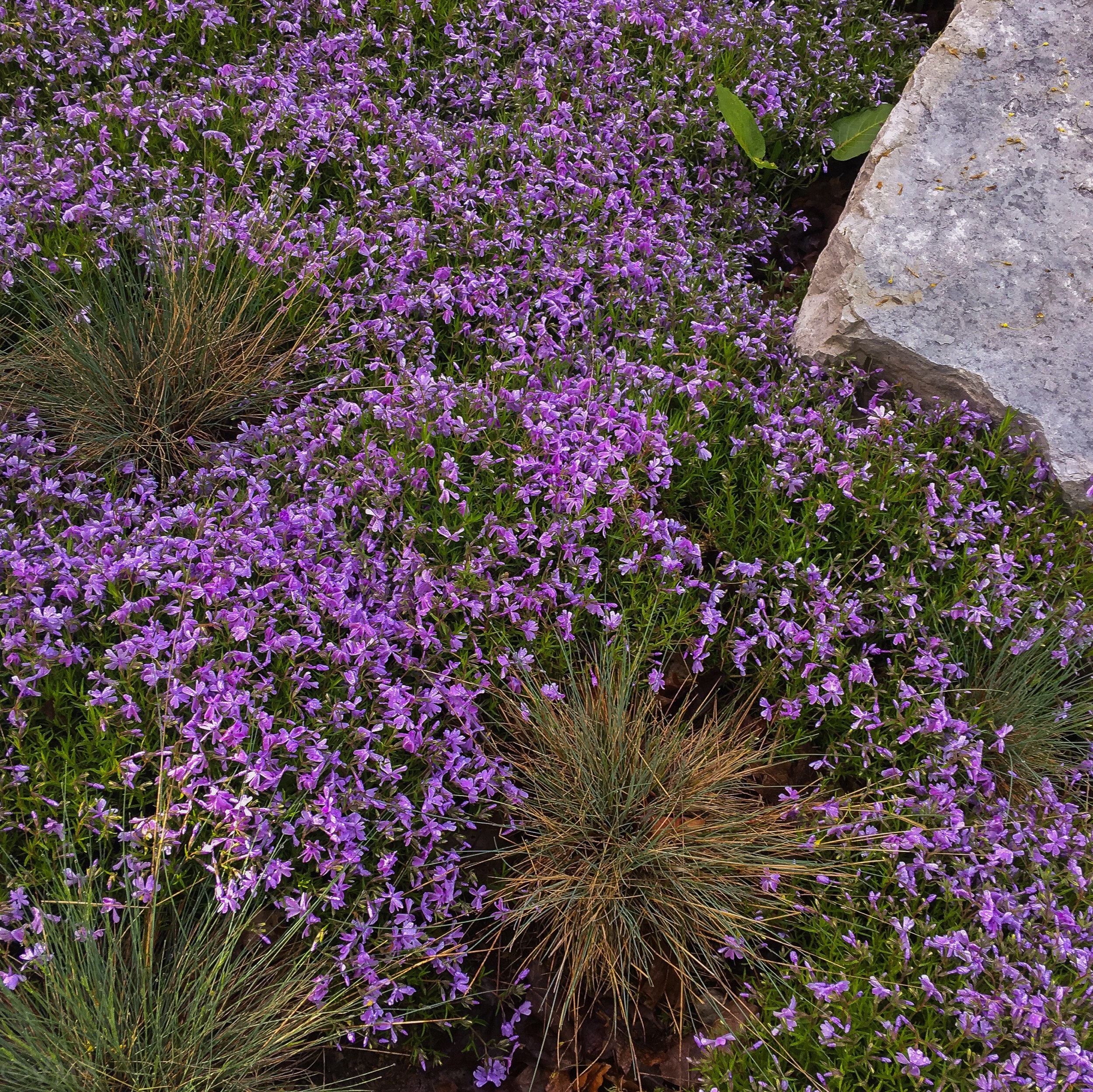Creeping phlox: Ground cover adds splash of purple to the garden
Purple ground cover shines in spring but sparkles all year round
Purple has become one of the trendy colours in the garden, and one of the best ways I’ve found to get it is with a healthy addition of creeping phlox.
Not only are the purple flowers stunning in spring when they bloom for weeks, the foliage remains an attractive almost-moss-like mass of deep green throughout the summer long after the flowers have disappeared.
Where to grow creeping phlox
Creeping phlox (Phlox subulate) is a real favourite in hot, sunny locations where it is happy to take in the full-day sun.
We have ours growing in the front of our property, where it not only gets full hot sun for most of the day, but also gets snow and road salt piled high onto it throughout the winter.
Not only does it keep coming back, it just performs and even gets better as it slowly spreads with each passing year.
If creeping phlox can take this type of abuse, it will grow happily in less taxing conditions in a sunny or even part-shade area of the garden.
Our neighbours have a nice patch growing as a low ground cover in a more traditional garden.
If you are trying to grow it in a shady woodland garden, look for Phlox stolonifera, which is a similar spreading, mat-forming phlox native to wooded areas and along stream banks in the Appalachian Mountains and other parts of North America.
Purple creeping phlox weaves its way through the river rock, boulders and ornamental grasses during its early spring bloom that lasts for weeks.
It really shines in early spring when the normally dark green prostrate plant bursts with lavender flowers.
It’s a real show-stopper in our front garden as it creeps among and weaves through the low-growing, ornamental grasses and onto the stones of the dry river bed.
It has also been encouraged to grow up against large boulders that separate the raised garden from the driveway.
In some areas it literally flows down between the large boulders creating a lovely soft edge to the rather hard-edged boulders. I never get tired of seeing the flowers flowing down between the boulders almost like a stream finding its way through the mountainside.
The purple flowers also blend in nicely with another mossy alternative, creeping thyme, that also grows over and along the large boulders. Together they form a nice tapestry in the spring with their purple flowers that are quick to attract pollinators, including our native bees out early looking for nectar and pollen sources.
Is creeping phlox invasive?
Creeping Phlox spreads rapidly and, while it puts on quite the display in the spring, it takes a back seat for the remainder of the year forming a perfect dark green backdrop for our blue-green grasses that emerge through the ground cover in this hot sunny, dry area of our garden.
It is not an invasive plant. In fact, its shallow roots make it easy to pull up and transplant in another part of the garden or share with a neighbour.
Is creeping phlox deer resistant?
The foliage mats are cushion-like, resembling moss, hence the common name of moss phlox. It is native to the central and eastern portions of Canada and the United States.
This herbaceous perennial grows in zones 3 to 9 in a rich, well-drained soil and comes in pink, red, white, blue, rose and lavender.
It’s a tidy plant that grows up to about 6 inches high with a spread of up to 2 feet for a single plant.
It eventually forms a thick mat and, for Woodland gardeners, it’s deer resistant. The fact our resident deer leave it be, should be enough to put reeping phlox high on anyone’s list of plants.
Creeping phlox likes full sun but tolerates some shade.
An added bonus is that it also attracts butterflies and provides an early food source for insects in the spring where it will be one of the first to bloom in your garden.
Looking for more information on ground covers? Please check out my other posts on ground covers I use in the woodland garden.
• Bunchberry ideal ground cover
• What is the easiest ground cover to grow?
• Creeping thyme as a ground cover
• Moss and moss-like ground covers
• Virginia Creeper as a vine or ground cover
Should you find a spot for creeping phlox in your garden?
There is always room for a little creeping phlox in a garden either as a spot of colour in the front of a garden bed or used as a ground cover where other taller plants are grown up through it.
It’s a tough plant that can take lots of abuse and continue to shine. In fact, several years ago ours was more or less dug up when we installed large boulders down the side of our driveway. When the project was completed, I took what little of the phlox remained and put it back in the area where it was dug up.
Within a year it was back and performing with its same vigour.
If you are looking to add a little purple to areas of your garden, you should consider adding this hardy, tough little plant to your garden beds or rock garden.




